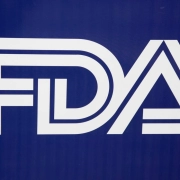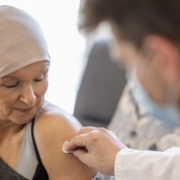What does game theory teach us about cell and gene therapy coverage?
What does game theory teach us about cell and gene therapy coverage?
By Liz Turner, Philip L. Cyr, Ross Maclean
There has been no shortage of articles, editorials, and conference panel discussions dedicated to reconciling the rewards and risks of cell and gene therapies (CGTs) and how payers and employers can best provide access to potentially transformative treatments while factoring in price and affordability. We believe that the classical game theory paradox, the “prisoner’s dilemma,” may provide useful insights in helping the various stakeholders develop solutions for how best to cover CGTs.
For those unfamiliar with this game theory paradox, the prisoner’s dilemma is where two individuals are arrested for a heinous crime and held separately from each other with the prospect of receiving a lengthy jail sentence. Fundamentally, each prisoner faces a reward versus risk scenario. On the reward side, whichever prisoner is quicker to take a plea bargain and “rat out” the other would receive a drastically reduced sentence; however, if neither tells on the other, then they would both end up with drastically reduced sentences. On the risk side, the prisoner who hesitates also loses, and the laggard in accepting a plea bargain could face life behind bars. Therefore, when the two individuals act in their own self-interests, they do not produce the collectively optimal outcome.
A wave of cell and gene innovation
We are at the genesis of the CGT revolution. Presently, there are 22 approved CGTs in the United States, many of them with prices of over $500,000 per treatment, and 15 new regulatory approvals are expected in 2023 alone.1 A tsunami of innovation is heading our way — there are more than 1,300 developers around the world conducting over 2,000 ongoing CGT clinical trials, 200 of which are either phase 3 or pivotal trials. In addition, this wave is likely to impact many more people than has been the case to date, where the first CGTs were for rare diseases with relatively small populations of individuals. Innovators are now targeting more common chronic diseases such as Alzheimer’s, Parkinson’s, hyperlipidemia, and type 1 diabetes.2-5
CGT’s prisoner’s dilemma: huge rewards, significant risks
CGT presents a high reward and risk proposition on multiple levels involving many stakeholders, including patients and their family members, conventional risk-bearing healthcare insurers, large employers who are self-insured (typically firms with 10,000+ employees and dependents), and CGT innovators, to name a few. Each stakeholder faces different rewards and risks, and the prisoner’s dilemma is at play! Below are some of the risks and rewards for several stakeholders.
Patients
The rewards from CGT are huge.
- The chance of finding a “cure” or, at a minimum, the likelihood of living a longer life with a higher quality of life
- Providing hope to patients and their family members who suffer from a disease with no adequate treatment options, such as inherited retinal blindness
The risks are potentially formidable.
- An intensive treatment regimen that necessitates many visits to the hospital for complex, high-tech medical procedures over a prolonged period
- Treatment failure bringing the patient back to “square one” with limited or no future options
- Financial ruin from the risk of out-of-pocket expenses; for example, a patient could be at risk of co-insurance costs running up to hundreds of thousands of dollars
Commercial health insurer
Tangible and intangible rewards
- The potential to deliver transformative treatments, or even cures, to individuals who would otherwise face a shorter life in poor health
- Significant future cost-offsets from a CGT investment today that obviates the need for what could be many years of symptomatic treatment of the physical, psychosocial, and emotional consequences of living with a distressing disease
Business risks
- Investing in CGTs that overpromise and underdeliver (i.e., efficacy that is not durable or safety concerns that could trigger unexpected health problems)
- Actuarial challenges in trying to balance the demand and affordability of CGTs, especially in more common chronic diseases with premiums that enrollees are willing to pay
- The ability to develop novel health insurance products that appeal to the consumer while keeping pace with CGT innovation
- A member leaving the plan before there is a return on investment on the upfront payment for the therapy
Large, self-insured employers
Rewarding employees and dependents
- The potential to be an “employer of choice” for many with benefits that include coverage for CGT
- In a tight employment market—especially among “knowledge workers”—the ability to attract and retain the most talented and productive employees
- Significant future cost-offsets from a CGT investment today for the dependents of an employee
Business risks
- As for commercial insurers, the fiscal reality of balancing the demand and affordability of CGT, especially in more common chronic diseases, with premiums that enrollees are willing to pay and employers are able to subsidize within the resources available.
CGT manufacturer
Rewards present here include
- Scientific, medical, and altruistic recognition by the wider community for developing and commercializing a meaningful advancement in human health
- Commercial success from meeting market demand
Risks are ever-present
- Unrecognized or late-stage emergence of safety issues, which can range from a lack of sustained efficacy to treatment–related side effects
- Failure to meet the pent-up demand for CGT, especially in more common chronic diseases, with a potential for consumer backlash
- Unfulfilled opportunity that despite an FDA-approved treatment access is denied due to CGT carve-outs and coverage denials
Summary
Now that CGTs have been on the market for several years, we are starting to see stakeholders act in their own self-interest to minimize their risk—the recent emergence of CGT coverage “carve-outs” by some commercial health insurers is one example of this risk minimization.
So, how do we address this complex dilemma in order to maximize the potential rewards and minimize the potential risks? Using the prisoner’s dilemma analogy, we can change the rules of the predicament facing the 2 stakeholders—we let them communicate with each other.
If the 4 stakeholders we have highlighted can be brought together, the dilemma can be addressed:
Risks can be presented, debated, and understood by all. For example:
- What populations are likely eligible for CGT, and how will those people be identified?
- How will treatment response be assessed in an objective manner that supports sharing the risk?
- What is the level and pace of reimbursement for CGT?
- How will CGT supply and demand constraints be managed by manufacturers and treatment providers while also maximizing the positive impact on human health?
Rewards can be made explicit and expectations for what is “fair and reasonable” established. For example:
- Will there be manufacturer guarantees of treatment efficacy, safety, and durability?
- What are the cost implications for providing access to CGTs, and what downstream cost-offsets are realistic over what period?
During the clinical stage and trial development, engaging with a neutral third-party during clinical development that has experience in CGT and the ability to develop evidence related to the many facets of value to the various stakeholders in order to facilitate the diverse perspectives, needs, and expectations of the many different stakeholders will be critical to achieving an open and transparent discussion. Creating an environment that is safe and invites cooperation just may solve CGT’s prisoner’s dilemma!
References
- Alliance for Regenerative Medicine. Regenerative medicine: the pipeline momentum builds. H1 2022 Report. September 2022. Accessed February 3, 2023. https://alliancerm.org/sector-report/h1-2022-report/
- Seydel C. Clinical trial begins for gene therapy to treat Alzheimer’s disease. Forbes. Mar 12, 2021. Accessed February 5, 2023. https://www.forbes.com/sites/carolineseydel/2021/03/12/clinical-trial-begins-for-gene-therapy-to-treat-alzheimers-disease/?sh=348768477171
- Verve therapeutics doses first human with an investigational in vivo base editing medicine, VERVE-101, as a potential treatment for heterozygous familial hypercholesterolemia. News release. Verve Therapeutics. July 12, 2022. Accessed February 5, 2023. https://ir.vervetx.com/news-releases/news-release-details/verve-therapeutics-doses-first-human-investigational-vivo-base
- Weintraub A. Taking gene therapy to the masses with innovations in diabetes, Alzheimer’s and more. Fierce Biotech. Mar 30, 2021. Accessed February 5, 2023. https://www.fiercebiotech.com/biotech/taking-gene-therapy-to-masses-innovations-diabetes-alzheimer-s-and-more
- Mulholland EJ. Parkinson’s disease: is gene therapy the answer we have been looking for? American Society of Gene and Cell Therapy. April 13, 2020. Accessed February 5, 2023. https://asgct.org/publications/news/april-2020/parkinsons-disease-awareness-month














